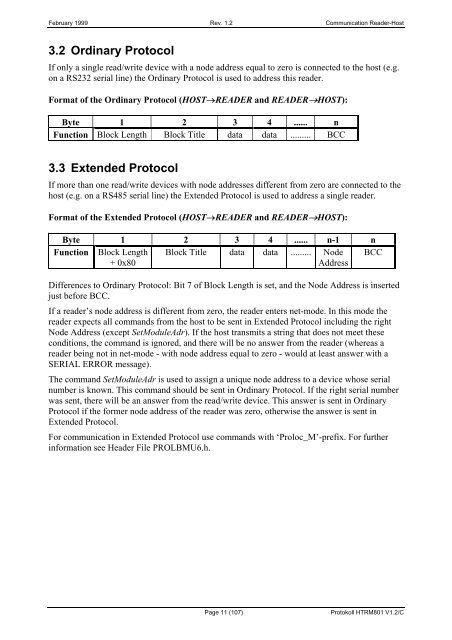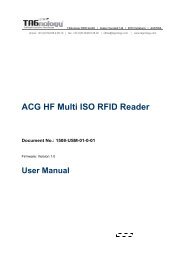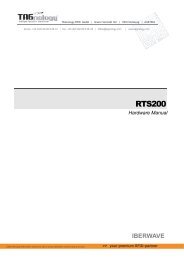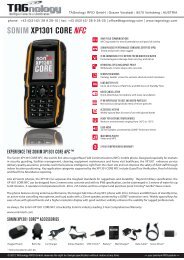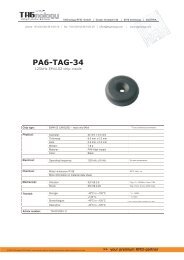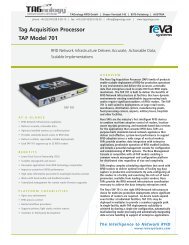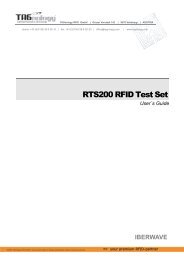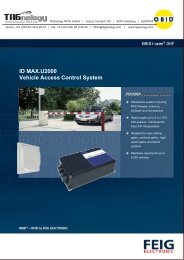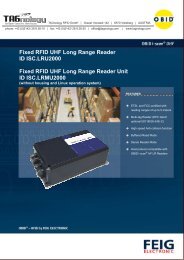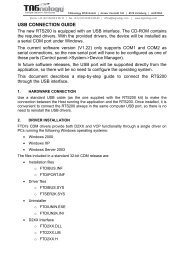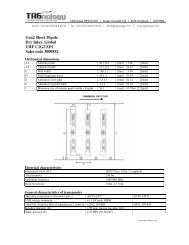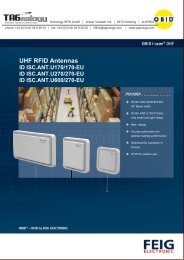TAGnology_TAGid -125kHz_Protocol.pdf - RFID Webshop
TAGnology_TAGid -125kHz_Protocol.pdf - RFID Webshop
TAGnology_TAGid -125kHz_Protocol.pdf - RFID Webshop
You also want an ePaper? Increase the reach of your titles
YUMPU automatically turns print PDFs into web optimized ePapers that Google loves.
February 1999 Rev. 1.2 Communication Reader-Host<br />
3.2 Ordinary <strong>Protocol</strong><br />
If only a single read/write device with a node address equal to zero is connected to the host (e.g.<br />
on a RS232 serial line) the Ordinary <strong>Protocol</strong> is used to address this reader.<br />
Format of the Ordinary <strong>Protocol</strong> (HOST→READER and READER→HOST):<br />
Byte 1 2 3 4 ...... n<br />
Function Block Length Block Title data data ......... BCC<br />
3.3 Extended <strong>Protocol</strong><br />
If more than one read/write devices with node addresses different from zero are connected to the<br />
host (e.g. on a RS485 serial line) the Extended <strong>Protocol</strong> is used to address a single reader.<br />
Format of the Extended <strong>Protocol</strong> (HOST→READER and READER→HOST):<br />
Byte 1 2 3 4 ...... n-1 n<br />
Function Block Length Block Title data data ......... Node BCC<br />
+ 0x80<br />
Address<br />
Differences to Ordinary <strong>Protocol</strong>: Bit 7 of Block Length is set, and the Node Address is inserted<br />
just before BCC.<br />
If a reader’s node address is different from zero, the reader enters net-mode. In this mode the<br />
reader expects all commands from the host to be sent in Extended <strong>Protocol</strong> including the right<br />
Node Address (except SetModuleAdr). If the host transmits a string that does not meet these<br />
conditions, the command is ignored, and there will be no answer from the reader (whereas a<br />
reader being not in net-mode - with node address equal to zero - would at least answer with a<br />
SERIAL ERROR message).<br />
The command SetModuleAdr is used to assign a unique node address to a device whose serial<br />
number is known. This command should be sent in Ordinary <strong>Protocol</strong>. If the right serial number<br />
was sent, there will be an answer from the read/write device. This answer is sent in Ordinary<br />
<strong>Protocol</strong> if the former node address of the reader was zero, otherwise the answer is sent in<br />
Extended <strong>Protocol</strong>.<br />
For communication in Extended <strong>Protocol</strong> use commands with ‘Proloc_M’-prefix. For further<br />
information see Header File PROLBMU6.h.<br />
Page 11 (107)<br />
Protokoll HTRM801 V1.2/C


